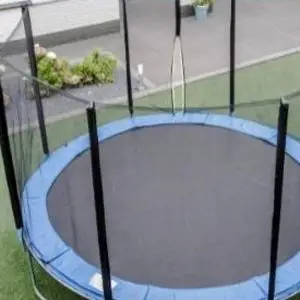Today we’re going to take a look at the materials that go into making these life-saving devices.
Safety Net Materials
The type of material used in a safety net depends on the application and the environment in which it will be used. Safety nets are made from a variety of materials, including nylon, polyester, and steel cable.
For example, nylon nets are often used in indoor applications because they are lighter weight and less likely to cause damage if they come into contact with people or objects. Polyester nets are often used in outdoor applications because they are more durable and can withstand exposure to the elements.
Types of Safety Nets
There are several types of netting that can be used for safety purposes, each with its own advantages and disadvantages. The most common type of netting is made from polypropylene, which is a strong synthetic material.
Polypropylene nets are very durable and can withstand a lot of wear and tear. However, they are also relatively heavy, so they may not be ideal for use in some situations.
Nylon netting is another option that is often used for safety purposes. Nylon is a lighter weight material than polypropylene, so it may be a better option in some cases. However, nylon is not as strong as polypropylene and it may not be as durable in some applications.
Kevlar is a type of netting that is made from a synthetic fiber that is incredibly strong and resistant to wear and tear. Kevlar nets are often used in industrial settings where durability is key. However, Kevlar nets are also relatively heavy and may not be suitable for all applications.
Safety Net Functions
Safety nets are designed to protect people and property from falling or to catch them if they do. The most common type of safety net is the one used in construction, which is made of nylon or polypropylene mesh. Depending on the application, other materials such as steel cable or Kevlar may be used.
Safety Net Advantages
Safety nets are made of a variety of materials, each with its own advantages. The most common type of safety net is made of nylon, which is strong and durable. Nylon safety nets are also relatively light, making them easy to transport and install. Another type of safety net is made of polypropylene, which is lighter than nylon but just as strong. Polypropylene safety nets are often used in construction because they are less likely to tear or be damaged by sharp objects.
Disadvantages of Safety Nets
When it comes to safety nets, there are a few disadvantages to consider. For one, safety nets can be expensive to install and maintain. Additionally, they can be unsightly, particularly when they are not well-maintained. Finally, safety nets can create a false sense of security, leading people to take risks they otherwise would not take.
How to Install a Safety Net
Installing a safety net is a simple process that can be completed in a few minutes. The first step is to choose the right location for the net. It should be installed in an area where it will not be obstructed by obstacles such as trees, branches, or buildings. The next step is to mark the four corners of the installation area with wooden stakes. Once the stakes are in place, attach the netting to the stakes using rope or zip ties. Make sure that the netting is stretched tight so that there are no gaps or openings.
How to Use a Safety Net
Using a safety net is a great way to protect yourself from falls. But before you can use one, you need to know how to set it up properly. There are two main types of safety nets: static and dynamic. Static nets are made of rope or cable and are intended for use in fixed locations, such as on the side of a building.
Dynamic nets are made of fabric and are designed to be used in movable locations, such as on the back of a truck. To set up a static net, first, find a suitable location. The net should be placed close to the ground so that if you fall, you won’t fall far. It should also be close to something that will support the net, such as a tree or a wall. Next, tie one end of the net to the supporting object and the other end to a secure anchor point. Make sure that the knots are tight and double-check them to make sure they’re secure.
To set up a dynamic net, first, find a suitable location. The net should be placed close to the ground so that if you fall, you won’t fall far. Next, tie one end of the net to the supporting object and the other end to a secure anchor point. Make sure that the knots are tight and double-check them to make sure they’re secure. Then, attach any additional supports, such as ropes or straps, to keep the net in place.
Maintenance
One of the most important things you can do to maintain your safety net is to inspect it regularly. Look for any rips, tears, or frayed edges, and repair or replace any damaged parts as soon as possible. In addition, you should clean your safety net on a regular basis to remove any dirt, dust, or other debris that could potentially cause problems.
FAQs
Q: What are safety nets made of?
A: Safety nets are usually made of strong synthetic materials like nylon or polyester. They’re designed to be durable and weather-resistant, so they can withstand heavy use and harsh conditions.
In Closing
Safety nets are made of a variety of strong materials to protect workers and athletes from falls. Always make sure the safety net you rely on is properly secured in place to a firm structure.
NEXT UP: Types of Safety Nets & Their Use

